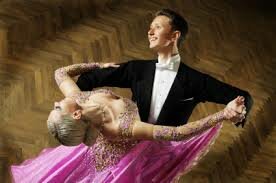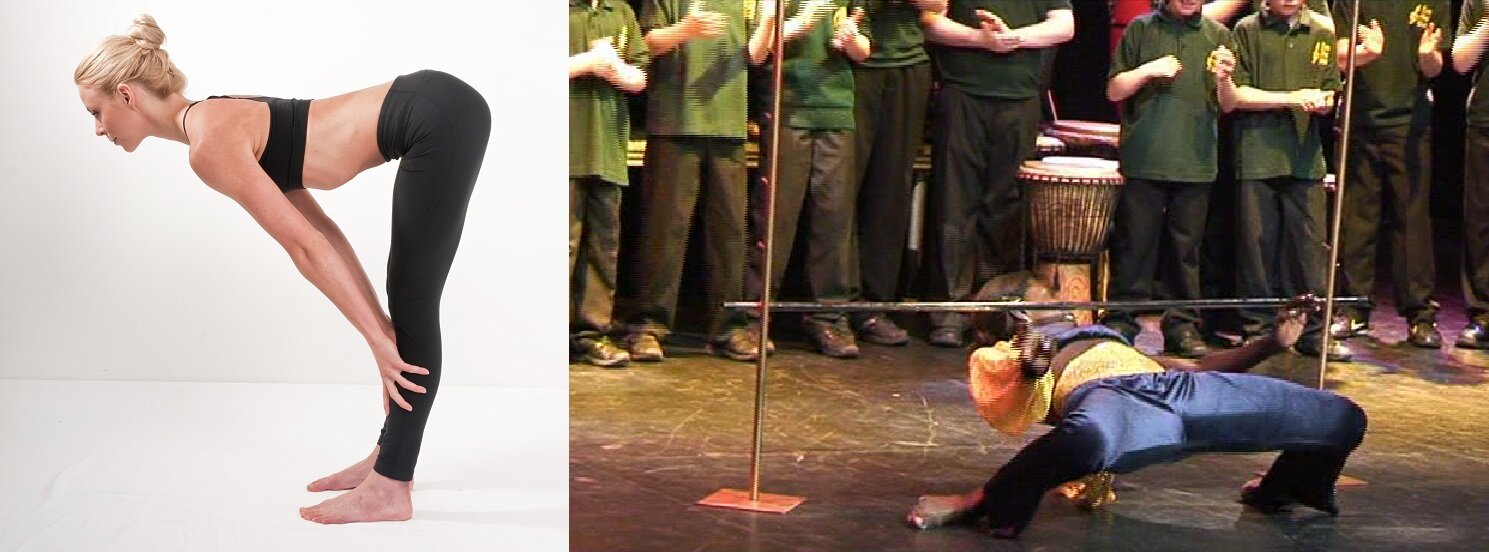The 3 Types of Rise 
12 October 2016
Most are taught Rise and Fall from their very first Waltz lessons, and indeed it is an integral concept in Standard, for only upon correct Rise and Fall can Swing be built, and only with correct Swing can Sway occur, and so on and so forth. One thing that is not always mentioned, however, is that there are different types of Rise and Fall that occur at different times during our dancing, and a solid understanding of these three types can help you feel more connected to your partner, and help your partnership look more beautiful and congruent.
Foot Rise
Foot Rise pertains entirely to the flexing and extending ankle joint, by bringing your toes closer or farther away from your knee, and decreasing or increasing the angle between your shin and the sole of your foot. As you rise onto the balls of your feet, you are using foot rise. Foot Rise is described mostly by the footwork, where HT, T, and THT indicate the usage of Foot Rise, whereas TH or Flat indicates ending without Foot Rise. For example, there is foot rise on step 1 of a Waltz Natural Turn for the Man, which is to say he rises onto the Ball before placing his second step; however, there is No Foot Rise (NFR) for the Lady on step 1, because although she does eventually lift the Heel off the floor, that doesn't happen until after step 2 is placed, by which time step 1 has already finished.
NFR is an important concept, and is used in most figures by the person going backward on the inside of the turn. By not using Foot Rise, the dancer allows his partner to swing past him freely. NFR is also used by the Lady during the Feather Step and Three Step,, which is why her footwork is always TH, even though the Man rises onto the T on step 2 of the Feather Step. When your partner uses Foot Rise but you do not, that is when the other forms of Rise need to be used more, in order to compensate.
Leg Rise
Leg Rise pertains to two separate joints: the knees and the hips. As the knees flex and extend, the angle between your shin and your thigh decreases and increases, and when your hips flex and extend the angle between your thigh and your torso decreases and increases (assuming you don't start tilting the pelvis). Because of this, both of these joints need to be used in unison to achieve Leg Rise, for if you were crouching and straightened only the knees you would end up bent over forward, as if to touch your toes; and if you straightened only your hips, you would look as if you were dancing the limbo.

Leg Rise is where most of the Rise and Fall in our dancing comes from. Whereas Foot Rise can change your height by only a few inches, Leg Rise can change your height drastically. It is also extremely important to release the knees in order to drop your weight to initiate a driving motion in times like during step 1 of the Natural Turn, discussed above. During steps that have NFR, it is Leg Rise that primarily takes over, and allows you to stay with your partner, even though you do not have the ability to use your ankles to rise.
Body Rise
Body Rise is sometimes lumped in with Leg Rise, because the two always work together, but it is possible to have Body Rise without Leg Rise. As discussed in the Perfect Posture Article, your spine is made of a series of curves: (from top to bottom) the Cervical Spine which runs through your neck, your Thoracic Spine which runs through the back of your rib cage, your Lumbar Spine which runs from around your lowest rib to your pelvis, and your Sacral Spine which is joined to the pelvis. While the Sacral Spine cannot move because the vertebrae are fused, all the other vertebrae are able to flex and extend. For that reason, the entire Spine can be lengthened by pulling the two ends apart and elongating the curves, or contracted by squishing to two ends together and exaggerating the curves.

Body Rise is the elongation of your spine. To feel it, imagine you are standing in a pool of water up to your chin, and you need to keep your head above water to breath (obviously this example will require you tilt your head upward, which is not a part of spinal extension but is a good idea if you want to avoid drowning). Have you ever seen good dancers seem to hang in the air and then blossom apart from each other? This is Body Rise they are using to create extra shape and to make their dancing float. Using Body Rise correctly also gives your dancing the look that it is breathing as you take certain steps.
Check out this video of Arunas and Katusha, current Professional Ballroom World Champions, dancing a Waltz. If you are not too distracted by their gorgeous dancing, examine just one figure at a time, and see if if you can notice when they use each type of Rise.